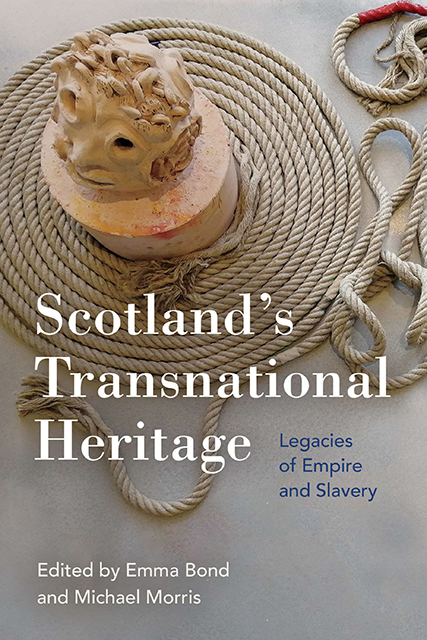Book contents
- Frontmatter
- Contents
- List of Figures
- Notes on Contributors
- Acknowledgements
- Foreword: Fostering Recognition under the Luxury of Amnesia
- Chapter 1 An Introduction to Scotland’s Transnational Heritage: Sites, Things and Time(s)
- Part I Transnational Sites
- Part II Transnational Things
- Part III Transnational Time(s)
- Afterword: Building Solidarity: Moving Towards the Repatriation of the House of Ni’isjoohl Totem Pole
- Index
Chapter 1 - An Introduction to Scotland’s Transnational Heritage: Sites, Things and Time(s)
Published online by Cambridge University Press: 25 October 2023
- Frontmatter
- Contents
- List of Figures
- Notes on Contributors
- Acknowledgements
- Foreword: Fostering Recognition under the Luxury of Amnesia
- Chapter 1 An Introduction to Scotland’s Transnational Heritage: Sites, Things and Time(s)
- Part I Transnational Sites
- Part II Transnational Things
- Part III Transnational Time(s)
- Afterword: Building Solidarity: Moving Towards the Repatriation of the House of Ni’isjoohl Totem Pole
- Index
Summary
Introduction: tools for transparency
This volume outlines some of the many legacies of empire, trade and slavery present in Scotland’s heritage landscape, and offers a range of practical and intellectual methods to help diversify the stories we tell about those legacies. Drawing on the combined expertise of a team of academics, museum professionals and creative practitioners, it also sets out to diversify the voices we choose to tell Scotland’s heritage stories. The volume originates from a Royal Society of Edinburgh funded network called ‘Transnational Scotland: Reconnecting Heritage Stories through Museum Object Collections’, which the editors of this volume ran between 2019 and 2020. The primary aim of the network was to facilitate a conversation between a group of Scottish museums which hold heritage collections relating to imperial trades: Fisheries Museum (Anstruther), New Lanark Heritage Site, Verdant Works (Dundee), V&A Dundee and the Watt Institution (Greenock). Our starting premise for embarking on that conversation was that through the long nineteenth century and beyond, Scotland operated as a transnational trade hub of huge global significance. The sugar refineries of Greenock, fisheries of the long East Coast, cotton mills of New Lanark and Paisley, and jute mills of Dundee all attracted raw materials from over the globe: from the West Indies and North America all the way to India and Australia. Scotland then exported her finished products back to the British colonies and across the world, creating an elaborate network of interconnected routes, objects and peoples. The project thus aimed to uncover and explore this transnational history of Scotland through a focus on objects of imperial trade and how each object had worked to facilitate the mobility and trade potential of the others, positioning Scotland as a truly transnational operator on the global stage. This volume presents some of the findings of the project, and opens out to include related activities and initiatives run by other individuals, groups, and institutions.
An example of this can be seen in the interlinking travel of jute, sugar, linen and herring. Jute sacks were shipped out from Scotland in order to carry cotton from the American South, grain from Argentina, coffee from the East Indies and Brazil, wool from Australia, and sugar from the Caribbean.
- Type
- Chapter
- Information
- Scotland's Transnational HeritageLegacies of Empire and Slavery, pp. 1 - 20Publisher: Edinburgh University PressPrint publication year: 2023



